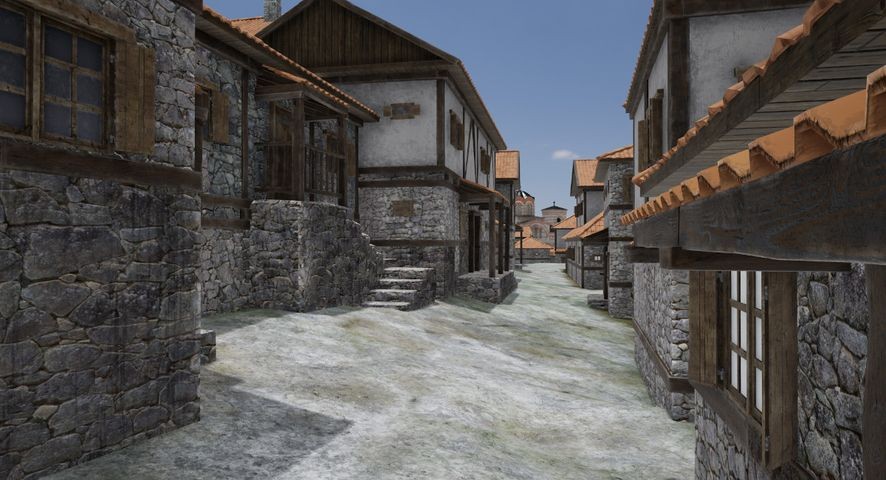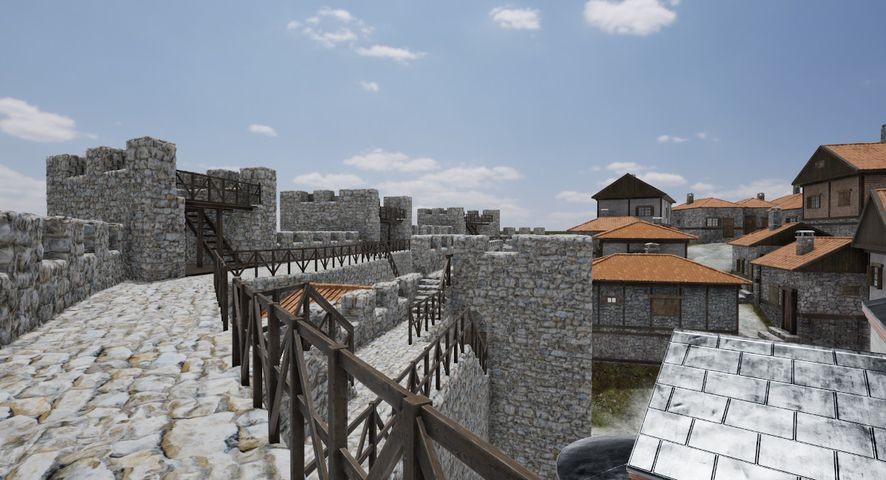Danube´s Archaeological eLandscapes - Virtual Reality of the medieval town of Cherven and the Ivanovo rock-hewn churches in Bulgaria
08-06-2022
With the visualization of the virtual reality of the medieval town of Cherven and the Ivanovo rock-hewn churches, a UNESCO site, the Bulgarian partner the Rousse Regional Museum of History opened his VR room and exhibition „Stories of the Past - Virtual Journey into Lost Landscapes“.
In the exhibition [Tales from the Past: Journeys to the Lost Landscapes] it is possible to travel back in time to the Middle Ages to Cherven Castle and the Ivanovo rock-hewn churches, a UNESCO site
The medieval city of Cherven near the Russians in Bulgaria was one of the largest administrative and religious centres of the Second Bulgarian Kingdom from the 12th to the 14th century. It is the successor to the early Byzantine fortress built during the 6th of the centuries. At its peak in the 14th century, the urban area covered more than 750 hectares of established land along the main road between the then capital of Tarnovo and the Danube.
Cherven had a complex, tiered fortification system, a densely built-up residential area and a ramified road network. Archaeological excavations began in 1910. /1911 in the year and since 1961. every year is researched. Since 1965, the medieval town has been declared a national archaeological reserve managed by the Regional Historical Museum of Russia.
Project partner: Regional History Museum of Russia, Регионален исторически музей - Русе / Rousse Regional Museum of History



The Ivanovo rock-hewn churches will be going virtual in our joint exhibition in the Danube basin.
In northeastern Bulgaria, hundreds of rooms, parts of old monasteries, have been cut into the rocks along the valley of the Rousse Lom River.
The largest among them is the Royal Monastery of St. Archangel Michael near the village of Ivanovo, Rousse region. He united the power of art with the activity of important Bulgarian rulers and spiritual leaders. This religious and cultural centre preserves unique frescoes from the 13th and 14th centuries, which are now part of the UNESCO World Heritage Site.
The frescoes are a manifestation of the Tarnovo School of Painting artists, which have the characteristics of the style "Late Palaeologus Renaissance". The frescoes are characterized by
emotionality, and neoclassical inspiration, with realistic figures that have volume. The painting incorporates elements of reality, and uses an architectural environment and the aesthetics of the reverse perspective.
The Ivanovo rock-hewn churches are a witness to the connections between the Bulgarian kings and the Wallachian princes, to the life on both sides of the Danube, where the population has common saints and heroes. The sacred valley of Rousse Lom is a cultural centre, the significance of which transcends today's national borders, as it is important for all mankind.


